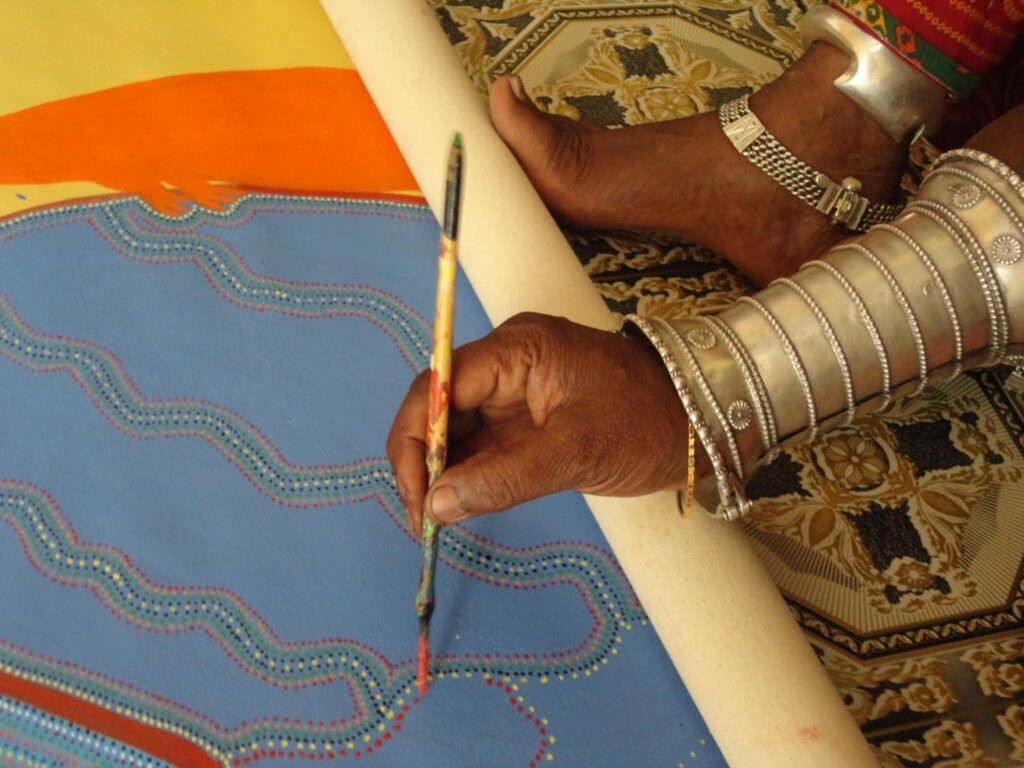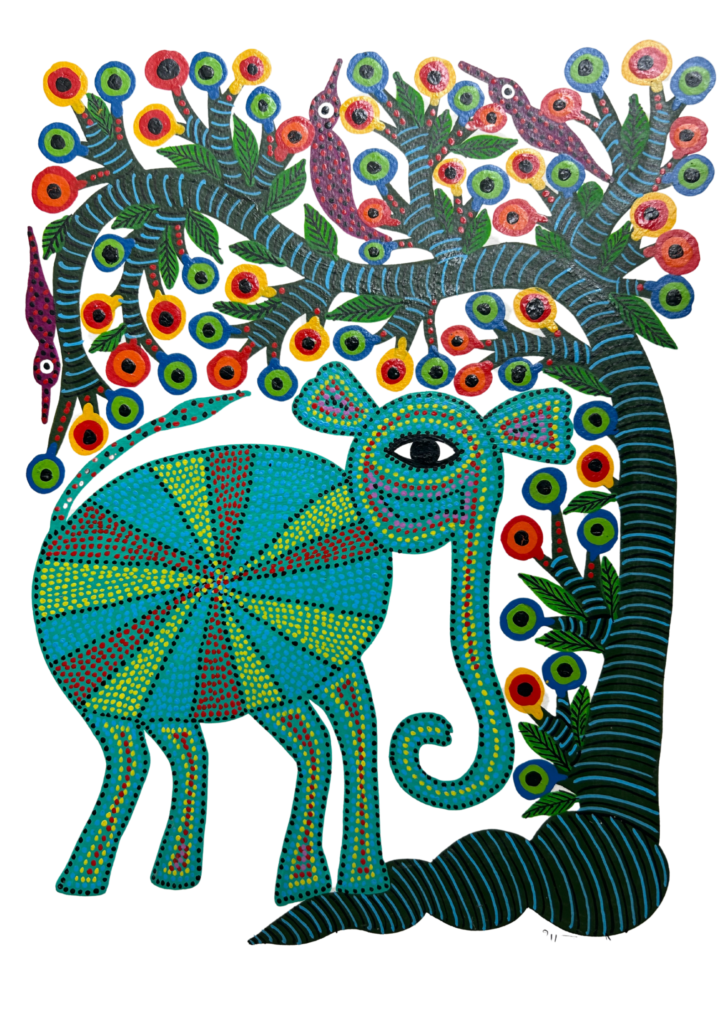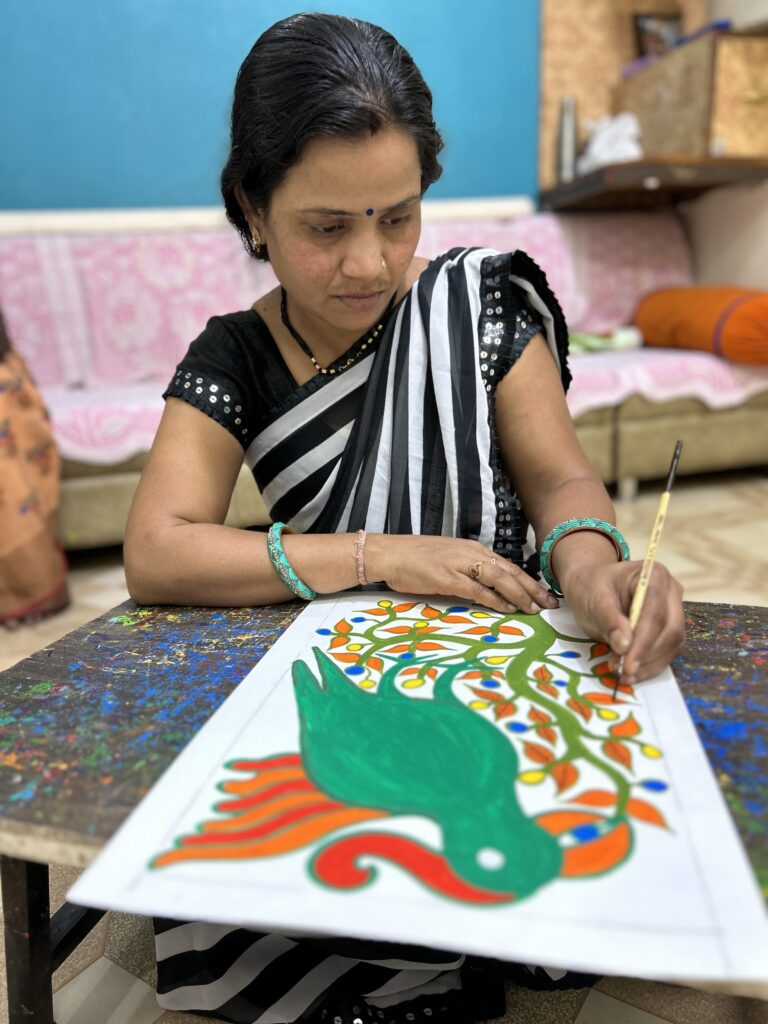BHIL ART
BHIL ART
Bhil paintings are the contemporary versions of Pithora paintings, which originally adorned the walls of tribal homes, but this captivating art form has now expanded onto paper and canvas, where it is brought to life with vibrant acrylic hues. Bhil paintings utilize a combination of outlining and pointillism techniques using brushes and pens. Their subjects span the spectrum from myths, rituals, and folklores to scenes from daily life.
These paintings showcase a plethora of gods and goddesses, horses, exotic birds, flying snakes, animals, and exquisite trees, along with various ritualistic depictions. Each of these entities is vividly depicted in an array of colors, all within a unique and distinctive style.


About Bhil Art
For the Bhil community, paper and canvas serve as mediums for storytelling. The process begins with selecting a ritual or natural element as the subject. After conceptualizing the composition, a rough pencil outline is sketched to lay the foundation for the visual narrative. The canvas or paper is then infused with bright acrylic colors, accentuated by intricate dots and lines. This meticulous process results in a visual narrative that weaves together forest inhabitants and ritualistic scenes. Bhil paintings are a living embodiment of the tribal village’s identity, deeply intertwined with their everyday lives. The Bhil homes exemplify an innate aesthetic sense, where walls are annually plastered and adorned with clay reliefs, mitti chitra, and paintings.
The pioneering artist J. Swaminathan discovered the latent talent of an 18-year-old Bhil woman named Bhuribai, who had migrated to Bhopal as a daily wage laborer during the construction of Bharat Bhavan, a multidisciplinary art center. Under Swaminathan’s guidance, Bhuribai transitioned her traditional Bhil wall paintings onto paper. Today, an increasing number of Bhil artists have embraced this shift, expressing their art on paper and canvas.
History
This art tradition is central to the Bhil community residing along the border of Gujarat and Madhya Pradesh states in India. While variations exist among different Bhil groups, these paintings hold profound social significance. Pithora paintings are particularly identifiable for the seven horses they feature, symbolizing the seven hills encircling the Bhil region. These paintings are considered sacred and are closely tied to the Bhil’s spiritual practices. A Pithora painting must be created on the main wall of a house whenever a wish made to “Baba Pithora” is fulfilled, a process overseen by the village Tantrik (witch doctor). The completion of the painting is a joyous occasion celebrated with song, dance, and festivity.
Pithora paintings herald auspicious occasions within families and communities, signifying joy, tranquility, and prosperity. Through their vibrant colors and animated figures, these paintings resonate with the heartfelt sentiments of their creators, mirroring the Bhil people’s aspirations and cultural identity.



